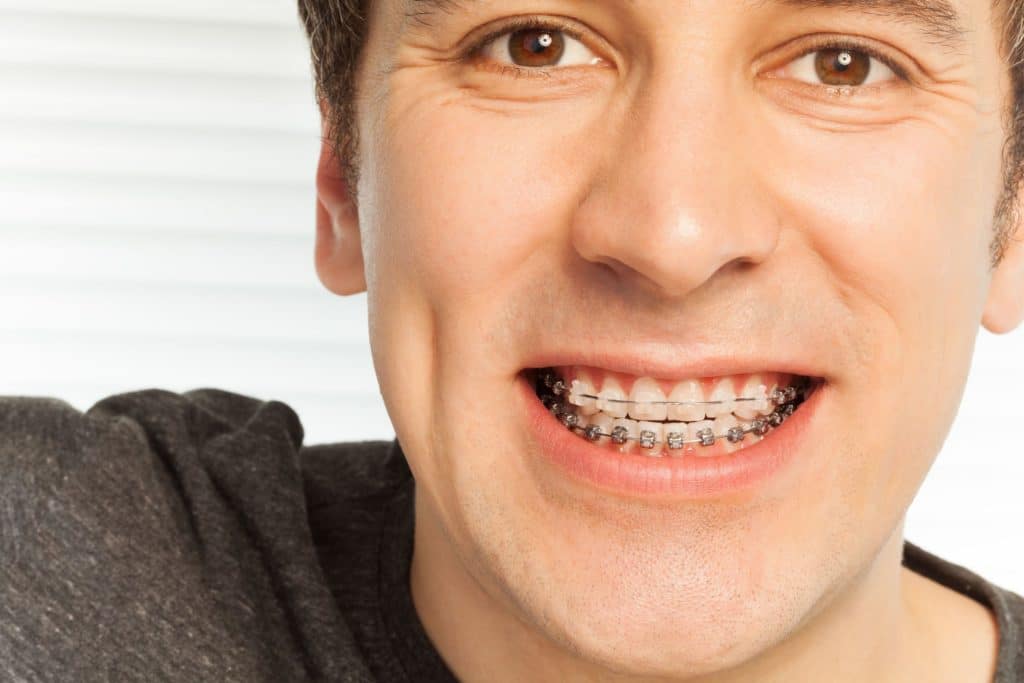Ever had the lingering numbness after a dental procedure and wished you could just get back to normal? Dental freezing makes treatments painless, but the aftermath can leave you waiting for hours before you can enjoy a meal or feel like yourself again.
Luckily, there are ways to accelerate the fading of that numb sensation. Whether it’s understanding how dental anesthetics work or knowing the tricks to increase blood flow, you’re not entirely at the mercy of time.
Table of Contents
ToggleUnderstanding Dental Freezing
What is Dental Freezing?
Dental freezing, more formally known as local anesthesia, is a targeted numbing technique employed to make dental procedures comfortable and pain-free. Lidocaine is the most popular agent used today, having replaced older options like Novocaine. Dental freezing agents also include Articaine, Bupivacaine, Mepivacaine, and Prilocaine. Your dentist selects the best fit based on the procedure’s duration, your medications, and health conditions.
Typically, a topical anesthetic is applied before any injections to minimize the sensation of the needle. It allows for a more agreeable experience, especially if you’re apprehensive about dental appointments.
Why is Dental Freezing Used?
The prime purpose of dental freezing is to achieve less painful dental work. Whether it’s a routine filling or a more complex procedure like a root canal, local anesthetics help you to remain comfortable throughout.
Beyond comfort, dental freezing is crucial for:
- Reducing involuntary movements that could affect the procedure’s accuracy
- Lowering stress and anxiety related to dental pain
- Enabling immediate continuation of dental work in the case of unforeseen complexities
How Does Dental Freezing work?
Dental freezing works by blocking the nerves in the targeted area from transmitting pain signals to the brain. When your dentist administers the anesthetic, it goes to work on the nerve fibres that control sensation.
The addition of Epinephrine—adrenaline—to the local anesthetic extends the numbness duration due to its vasoconstrictive properties. This shrinks the blood vessels, limiting blood flow and thereby slowing the metabolization of the anesthetic.
The pulp of the tooth, interestingly, sheds the effect of dental freezing more rapidly than the soft tissues like lips, cheeks, and gums. But, a high blood flow in the treatment area can sometimes prevent freezing from taking effect, usually in the presence of a significant infection. In such cases, dentists may resort to antibiotics to manage the infection before administering further anesthetic.
Eventually, the rate at which freezing fades depends on several factors – the specific anesthetic used, whether it includes epinephrine, and individual patient reactions.
Increasing hydration and circulation helps metabolize the anesthetic faster, leading to a quicker return of normal sensation. So, the next time you find yourself with a numbed mouth post-procedure, consider reaching for a glass of water and moving about to kick-start the thawing process.

Ways to Get Dental Freezing Out Faster
When you’ve had a dental procedure, the last thing you want is lingering numbness. Here’s how you can expedite the process and regain feeling more quickly.
Promote Blood Circulation
One of the key ways to reduce the lasting effects of dental freezing is to promote blood circulation in the affected area. Increased blood flow helps to metabolize the anesthetic, returning sensation to your numb tissues. Here’s what you can do:
Apply Warm Compress
Applying a warm compress can significantly improve blood circulation, which in turn may help in reducing the time you experience numbness. Ensure the compress is not too hot to avoid burns and apply it to the outside of your facial area where the procedure was performed. The warmth not only assists in quicker dissipation of the anesthetic but also provides a soothing effect, easing any potential discomfort you might be feeling.
Massage the Area
Gently massaging the area around the dental work can be beneficial for encouraging blood flow without applying excessive pressure. Here’s how to do it:
- Wash your hands thoroughly.
- Use your fingertips to lightly massage the affected area.
- Keep movements gentle to avoid causing any injury to numb spaces.
A little bit of massage goes a long way in stimulating circulation and can contribute to a sense of well-being.
Stay Active and Move Around
Even light physical activity can have a positive impact on circulation. If your dentist approves, engage in activities like:
- Taking a short walk.
- Doing gentle household chores.
Remember, while staying active is beneficial, it’s important not to overexert yourself, particularly right after dental surgery. This balance ensures you’re helping your body in its recovery process without causing any additional stress.
Speeding up the Recovery Process
Follow Post-Procedure Instructions
Your dentist knows best when it comes to recovery from dental procedures. They’ll provide specific instructions tailored to your situation, which must be followed closely to ensure a swift recovery. This could include keeping your head elevated to reduce swelling or avoiding certain foods that could harm the affected area. Adhering to these guidelines will not only help the fading of dental freezing but also prevent complications.
Take Medications as Prescribed
Post-procedural care often involves medication to aid in healing and comfort. If you’ve been prescribed antibiotics, it’s vital to complete the full course, even if you start feeling better. Discontinuing antibiotics prematurely could lead to antibiotic-resistant bacteria. For pain management, take analgesics exactly as directed; overuse can be detrimental to your recovery.
Use Ice Packs or Cold Compresses
To mitigate inflammation, cold therapy is highly effective. Applying ice packs or cold compresses to the cheek near the treatment area can soothe acute swelling and reduce pain. Remember to wrap ice packs in a towel to avoid direct contact with skin, and apply for no more than 20 minutes at a time. This targeted cold treatment supports quicker diminishment of numbness from dental freezing.
Avoid Smoking and Alcohol
Post-dental procedure, avoiding nicotine and alcohol is crucial. Both substances constrict blood vessels, inhibiting the body’s ability to metabolize the anaesthetic efficiently. By steering clear of smoking and drinking, you not only speed up the thawing of dental freezing but also promote overall healing.
Maintain Good Oral Hygiene
Finally, maintaining exemplary oral hygiene is key to hasten recovery. Gently rinse your mouth with saltwater to reduce the risk of infection and manage inflammation. Be sure to brush your teeth softly around the affected area to prevent irritation. Proper oral care will help clear the anaesthetic from your system and has the added benefit of fostering a healthy mouth environment for recuperation.
| Oral Hygiene After Dental Work | Considerations |
| Saltwater Rinses | Few Times a Day |
| Brushing Technique | Gentle, Avoid Irritation |
| Risk Management | Prevent Infection |
When to Seek Professional Help
Regaining sensation after dental procedures can take time, but it’s important to know when to reach out to healthcare professionals for assistance. Some symptoms and side effects warrant immediate attention.
Prolonged Numbness or Tingling
Numbness following dental work is typical; but, if it persists for an unusual length of time, it may be more than a mere inconvenience. It’s critical to be aware of the normal duration for numbness, which typically lasts a few hours. When the effect doesn’t wear off within 24 hours, or if you experience ongoing tingling beyond the expected period, it’s a sign to consult your dentist. Extended numbness could indicate nerve irritation or damage, which is rare but possible, and requires prompt professional evaluation.
- Standard numbness duration: A few hours post-procedure
- Concern threshold: Numbness persisting past 24 hours or continuous tingling sensation
Severe Pain or Swelling
While some discomfort is anticipated after dental work, severe pain or noticeable swelling can be red flags. If pain escalates instead of gradually diminishing or if swelling worsens, these symptoms can signal an infection or an adverse response to treatment. Dental professionals can assess the need for antiseptic medications or adjustments to your recovery plan.
Take note of:
- An escalation in pain intensity
- Swelling that increases or doesn’t subside

Allergic Reactions or Side Effects
Allergic reactions to anesthetics, though rare, can manifest as itching, redness, or even more severe symptoms like dizziness, increased heart rate, and swelling at the injection site. Any such occurrence should prompt immediate medical attention. Known side effects associated with local anesthetics shouldn’t be overlooked if they become prominent or disruptive.
Be vigilant of:
- Itching or redness around the injection site
- Dizziness or heart palpitations
- Unexpected swelling or bruising.
Reach Out to a Dentist
You’ve got the tools to shake off that numb feeling after dental work. Remember, boosting circulation is key—hydrate, apply warmth, and keep moving. Gentle massages around the area work wonders too. Stick to your dentist’s advice, manage discomfort wisely, and maintain oral hygiene to speed up recovery. If numbness lingers or you notice any worrying signs, don’t hesitate to contact a dentist. Your comfort and health are paramount, and with these tips, you’ll be back to feeling normal in no time.

After attending McMaster University to obtain his Health Science undergrad degree, Dr. Christopher Sims made his way to Toronto to complete his DDS degree at the University of Toronto. But his education didn’t stop there.
He’s completed a number of additional courses to best serve his patients and be able to educate them too. No matter your age or dental condition Dr. Sims can assist you in a professional manner and loves answering any of your questions or concerns.
Dr. Sims grew up in Grimsby playing basketball, so he’s always up for talking about the Raptors! He’s also a football fan – go Buffalo Bills! In his free time, if he’s not watching a basketball game or football game, you’ll likely find him working out, cooking (got any new recipe ideas?), and of course, spending time with his amazing family.










